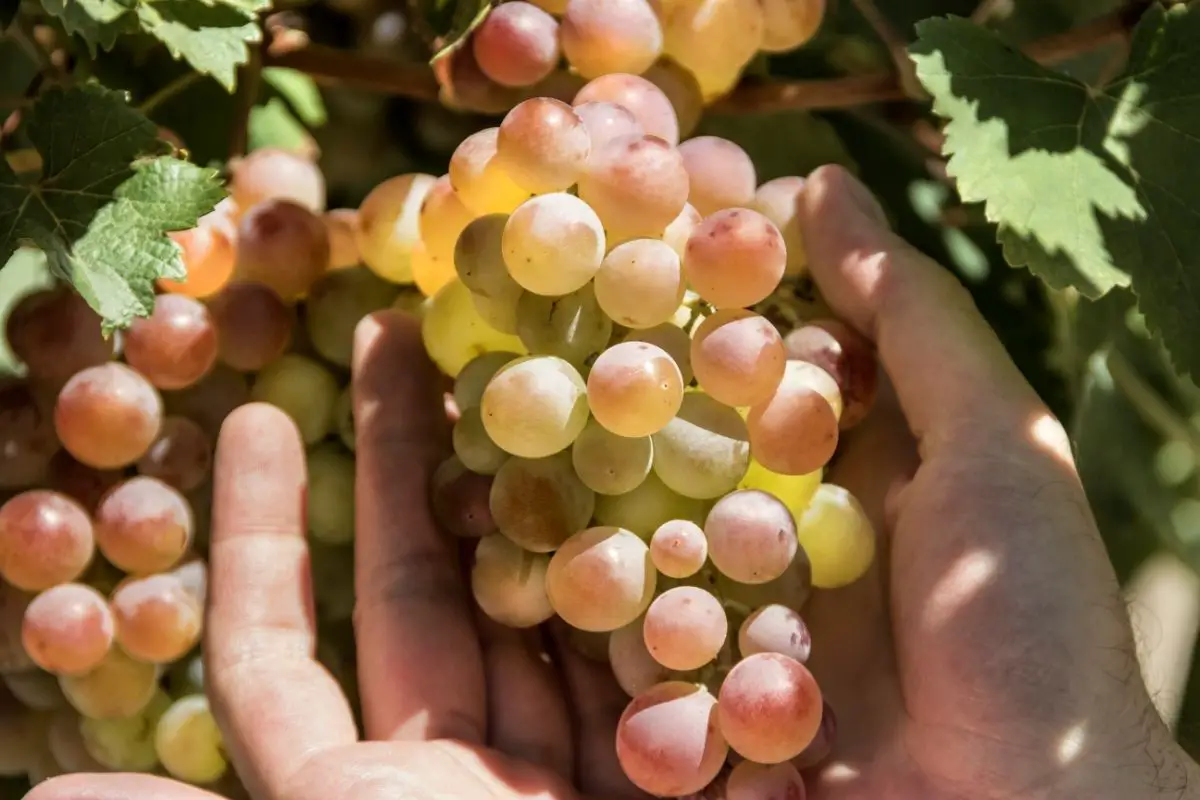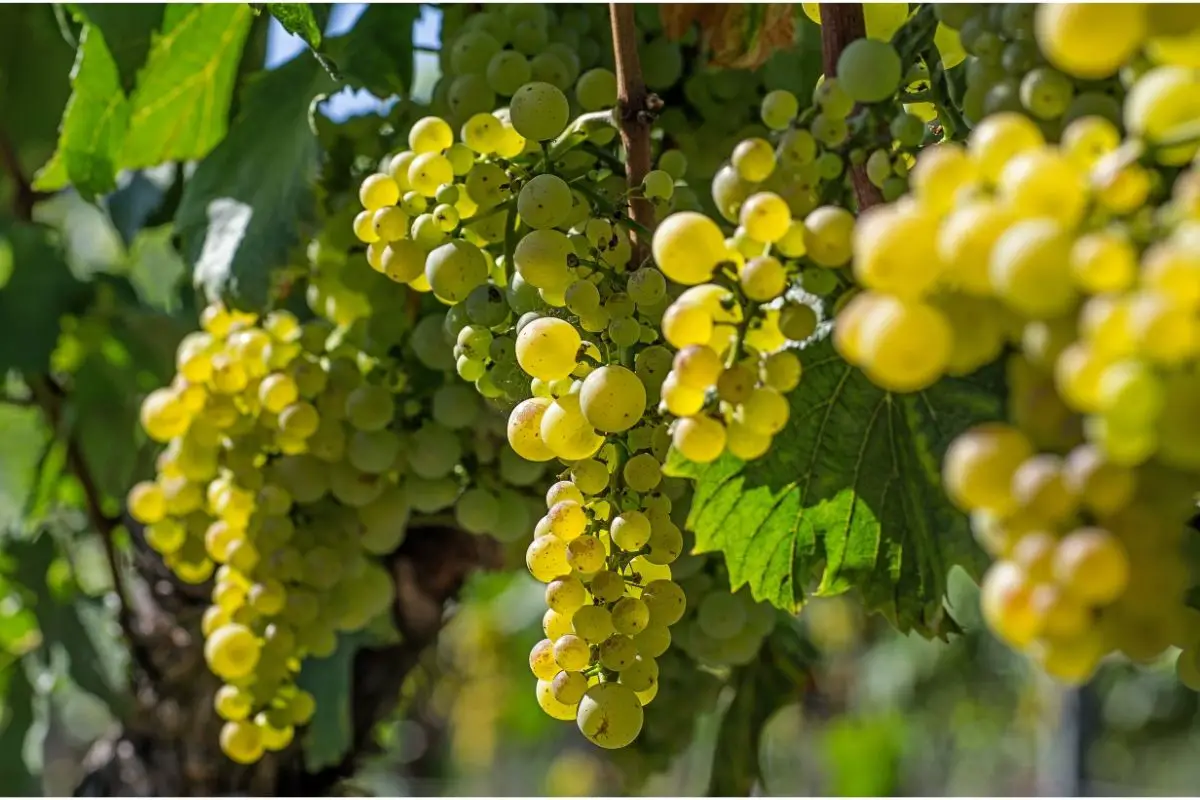Gewurztraminer and Riesling are similar wines. They both have their roots in Germany, although they are now produced in other countries all over the world. Riesling, however, is better known and more easily accessible. In this article we are going to take a look at both wines and see what their differences and similarities are.
The Major Differences Between Gewurztraminer and Riesling
- Gewurztraminer grapes are grown all over Europe in countries such as Slovenia, France, and Bulgaria. You can also find it in Australia and Canada. Riesling, as well as being produced in Germany and other European countries, is also produced further afield in such places as the Napa Valley in California and Australia.
- Gewurztraminer is low in acidity, while Riesling is high.
- Gewurztraminer has a higher alcohol content than Riesling,
- Gewurztraminer pairs well with roasted meats and vegetables, while Riesling goes with spicy foods.
- Riesling tends to offer more budget-friendly options than Gewurztraminer.
Now let’s take a look at each wine in turn.
Gewurztraminer

Gewurztraminer has an unfortunate name which can put some people off. For a start, it’s quite a mouthful. Then, the name seems to suggest a beer rather than a wine. However, it has been around since the 16th century so it has had time to be perfected.
History
The history of the Gewurztraminer grape is complicated. It is thought to be related to the Traminer grape, a green-skinned grape named after the town Tramin, in Northern Italy. The famous wine expert, Pierre Galet, thought that the Traminer grape was the same as the Sauvignon Blanc grape. At some point these grapes became pink-skinned leading to the production of Gewurztraminer in the South Tyrol region of Italy. This is a German speaking area and the wine then started to be produced in Germany. Here the grapes are similar to the ones used to produce Pinot Gris and Pinot Grigio. Once Gewurztraminer had taken root in Germany, it soon spread throughout the Alps from Switzerland right down to Bosnia. It is also popular in other countries such as France.
The Gewurztraminer produced in Germany and the one produced in Italy are different. The German wine isn’t as aromatic or as high in alcohol as the Italian version.
However, the wine was called Traminer for many hundreds of years before it became Gewurztraminer in Germany. Gewurz means spice in German and the German wine does have spicy notes.
The Italian version seems to have lost popularity in recent years and isn’t produced as much in the South Tyrol.
Regions
Gewurztraminer is produced in many countries in Europe, including Germany, Austria, France, Bulgaria, and Serbia. France is the second highest producer of Gewurztraminer wine. The Gewurztraminer from the Alsace region of France, near to the border with Germany and Switzerland is one of the best. It can either be sweet or dry and the sweet version is often used as a dessert wine.
Gewurztraminer is also produced in Australia in the cooler regions. The grape grows best in a cooler climate and in Australia the wine is produced in the Australian Alps, Yama Valley, Tasmania, Clare Valley, Adelaide Hills, and Eden Valley.
The grape can be found in the northern regions of the US such as Pennsylvania, Rhode Island, and Michigan as well as in Canada on the Niagara Peninsula, Vancouver Island, and Prince Edward County.
Flavour
The Gewurztraminer grape is capable of producing wines ranging from sweet to dry, but it is more common to find the dry version. It is a complex wine that is very aromatic and has a wide variety of tastes and aromas. They range from rose to apricot kernel to tropical fruits, together with pepper and sweet spices. When there’s noble rot, dried fruits and honey also appear in both the flavour and aroma. The fruity flavours include lychee, grapefruit, orange, cantaloupe melon, apricot, peach and pineapple.
The aromas and flavours are intense which may make it a little harder to drink than Riesling. It often tastes sweeter than it is because of the sweet flavours, low acidity, and high alcohol content. In some ways it is similar to Moscato, the sweet Italian wine that tastes of peaches and oranges. Moscato is a fruity wine like Gewurztraminer but it isn’t as high in alcohol content.
Food Pairings for Gewurztraminer
Gewurztraminer, being a white wine, won’t pair with red meats, but it goes well with other meats such as chicken, turkey, bacon, pork, crab, lobster, and shrimp. It is also a good match for vegetarian dishes especially those containing onions, bell peppers, tempeh, aubergine, carrot, squash, and pumpkin.
Gewurztraminer pairs with Middle Eastern food like a tagine, particularly if the meal contains ginger. The aroma of ginger in the wine will bring out the flavours of ginger and rose water in the food. Drier styles can be paired with spicy food from Asia, India, and Latin America. The wine will stand up to a curry, even the sweeter versions. Dishes from the Far East flavoured with Sichuan pepper, lime leaf, soy sauce, turmeric, cumin, and coriander are delicious with Gewurztraminer. Meats seasoned with cayenne pepper, clove, cinnamon, and clove also go well.
Gewurztraminer is a good replacement for Port if you are having cheese and biscuits. The wine pairs well with delicate and semi-soft cheeses such as Alsation Munster, Havarti, Provolone, and Taleggio. It also works well with blue cheeses such as Blue Stilton and Roquefort. The cheeses can be complemented by dried fruits such as cranberries.
If you have a sweet Gewurztraminer, you can use it as a dessert wine. It goes well with fruit tarts and crumbles. It is especially good with dishes involving dried fruits, nuts, and cinnamon. Try making baked apples with cinnamon and dried fruits.
A Selection of Gewurztraminer Wines

The Lucien Albrecht Gewurztraminer Reserve 2010
This Gewurztraminer is from the Alsace region of France. It is one of the best wines of this variety. Even before you take the first sip, you will get an aroma of orange teriyaki sauce which makes it a great pairing for an Asian dish, particularly Thai food which has a touch of sweetness.. It would also go well with the French dish, duck a l’orange. The flavour begins sweet and then you get a bit of sour.
The Gundlach Bundschu Estate Vineyard Sonoma Coast 2011
This Gewurztraminer comes from California and is a bottle that is probably easier to get hold of than some others. This variety is very dry and crisp and has aromas of pear and lime. Because it is so dry, it will pair well with curries made with meat, seafood, or aubergine, as well as biryanis. Cumin, coriander, cinnamon, and turmeric are ideal matches for this heavenly wine.
The Hugel and Fils Gewurztraminer 2010
This is another wine from Alsace so may be harder to come by than a Gewurztraminer from Germany or California. This is a peppery wine, which is a little bitter at first, but is finished with sweetness. It has aromas of lychee, mango, and yellow flowers. It is a dry Gewurztraminer and therefore pairs well with spicy foods.
Riesling

We will now take a look at Riesling, which is more widely known than Gewurztraminer. Perhaps it does have something to do with the name. Riesling has a great following all over the world and is a great wine to have with or without food.
History
There are records of this wine from as far back as 1435. It comes from Germany from the Rhine region. The Rhine is one of Europe’s longest rivers which runs through the Netherlands, Germany, and Switzerland. Riesling is an aromatic grape variety which makes dry, semi-sweet, sweet, and sparkling white wines. It has high acidity and has stone fruit, citrus, spice and floral notes.
One of the parent grapes of Riesling is the Gouais Blanc which was used to make wine in the Middle Ages in France and Germany. This grape is rare today. The other parent grape is a cross between a wild vine and the Traminer grape. It shouldn’t be surprising that the Traminer grape is somewhere in the heritage of Riesling as this wine does have similarities with Gewurztraminer. You may be surprised to hear that there is also a red Riesling, although it is rare. You might see it sold under the name of Roter Riesling. The grapes are a pink colour which could have mutated from a white Riesling grape.
Regions
The most popular wine in Germany is Riesling. German Rieslings are never aged in oak barrels although they can be in other countries. This, of course, changes the flavour and aroma. If wine is aged in oak, it gets a vanilla aroma which gets stronger the longer it is aged.
Riesling produced in the south of Germany where it is warmer, is heavier with a higher alcohol amount than Riesling produced in the north of the country. Riesling from Germany ages well and it can be aged for up to five years.
France is another country that produces a large amount of Riesling. More than ⅕ th of the Alsace vineyards are devoted to Riesling grapes. French Riesling is aged in oak barrels so differs in some ways to the taste of German Riesling. Because of the way French Riesling is produced, it has a higher alcohol content than German Riesling.
Riesling is produced all over the US, in both cool and hot climates. The Riesling that is produced in cooler climates tastes much sweeter than Riesling produced in hot climates. You will find vineyards as far apart as New York state and the Pacific Northwest.
In the Niagara region of Canada, almost as much Riesling is produced as in the whole of Germany. Because there are cold temperatures in Canada, there is a chance of the grapes freezing and so ice wine is produced out of some of the Riesling grapes.
Riesling is also produced in Australia. It has a slightly different taste to German Riesling. It tastes of citrus and has an oily texture. It doesn’t age as well as German Riesling.
Other countries that produce Riesling include Uzbekistan, Serbia, Romania, Croatia, Chile, South Africa, Italy, and Hungary.
The Flavour of Riesling
Riesling is a deliciously refreshing aromatic wine. You will get crisp flavours of apples, apricots, peaches, pears, and nectarines. You will smell jasmine, lime peel, and honeycomb. Aged Rieslings may have aromas of diesel or lanolin. It is an acidic wine which makes it a crisp wine. Traditionally, Riesling is meant to be sweet, but it can be dry as well.
Food Pairings for Riesling
Riesling food pairings can be a bit of a challenge as the wine can be sweet, semi-sweet, dry, or sparkling. The dry Rieslings will have the highest acidity and they are best paired with salty, fatty, or acidic food. Pasta in a tomato sauce is a good choice as are herrings and mackerel. A Chinese dish with soy sauce would also be good. An off-dry glass of Riesling would go well with heavier fish dishes with lots of flavour. Try fish curry or oysters in a hot sauce.
Sweet Rieslings pair well with spicy food. Mexican, Indian, Thai, and Chinese all go well. Spiciness is more than chilli. Pair the wine with cayenne pepper, ginger, mustard, horseradish, cloves, allspice, cinnamon, turmeric, Sichuan pepper, and teriyaki sauce.
Riesling is a great match for a cheese board. An off-dry Riesling will pair well with pungent washed-rind cheeses like Munster and Taleggio. The sweetness and acidity of the wine balances the strong flavours of the cheese. Dry Riesling can be served with light and salty cheeses like Feta and Mozzarella. A sweet Riesling pairs with blue cheeses like Stilton and Roquefort.
Because of its high acidity, Riesling is a great accompaniment to snacks such as spicy canapes and salty potato chips. Riesling sekt, which is a sparkling Riesling, is also a good match for snacks and canapes.
Thanks to its sweetness, you can drink Riesling with desserts. The sweet or off-dry versions are good with lighter desserts such as lemon meringue pie, apple pie, or berry desserts.
A Selection of Riesling Wines

Landshut Riesling 2018
This is a very reasonably priced wine that can be bought at Aldi. Despite the fact that it is cheap, it is a fantastic Riesling with aromas of tropical fruit, honeysuckle, peach, pear, and apple. It is smooth with a sweet finish. It would pair well with pasta in a tomato-based sauce or a fish curry.
Eroica Riesling
This Riesling is available at Costco so is easy to get hold of. It has aromas of lime, tangerine, green apple, honeysuckle, peach, grapefruit, and spice. It is sweet and smooth and would go well with spicy food.
Nik Weis St Urbans Hof Estate Riesling 2018 from Old Vines
This is a luscious Riesling with aromas of apricot, pear, green apple, tropical fruit, and lemon. It has a sweet and sour acidity and a sweet finish. It would pair well with a sweet and sour Chinese dish or a vegetable curry.
Comparison Gewurztraminer vs Riesling
To sum up, Gewurztraminer is richer than Riesling. It has a silky texture and a dry finish. Riesling is carefree, is either dry or sweet, and has a crisp finish. Let’s now take a look at all the differences and similarities.
Gewurztraminer is not as easy to source as Riesling. Riesling can be found in almost every supermarket and off-licence. Both Gewurztraminer and Riesling have a floral aroma, but Gewurztraminer is more pronounced. Gewurztraminer is rich, while Riesling is crisp. The acidity of Riesling is high while that of Gewurztraminer is low. You will find that most Gewurztraminer wines are dry, while Riesling can come in sweet, off-dry, dry, and sparkling. The texture of Gewurztraminer is silky or oily while Riesling is bubbly although Australian Riesling is oily. Gewurztraminer is more decadent than Riesling with a lush and heavier feel. The finish of Riesling is short and light while Gewurztraminer has a long and smooth finish. Both wines should be served chilled, but Gewurztraminer should be chilled for longer and be colder. Gewurztraminer is best served young, while Riesling can be aged for a number of years.
Frequently Asked Questions
Should you chill Gewurztraminer?
Chilling wine brings out the aromas of white wine. Gewurztraminer should be served at 12 – 15C.
Can you serve Gewurztraminer as a dessert wine?
You can get a sweet Gewurztraminer and this can be served with fruit tarts, crumbles and fruit baked with spices like cinnamon.
How Long can you keep Gewurztraminer and Riesling?
Gewurztraminer should be drunk within a year, but Riesling can be kept for between three and five years.
Summary
Both Gewurztraminer and Riesling are excellent wines that pair well with quite similar foods and can also be enjoyed on their own as an aperitif. Riesling is more commonly found, but if you get a chance, try Gewurztraminer and compare the two. There are differences between the two as we have shown, but you can usually substitute one for the other.


